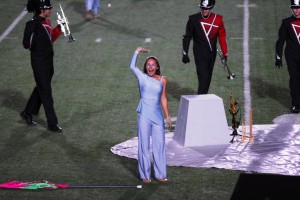hope
Smart as a 5th grader #8
5-21-99
My plans about summer are having free time and playing games. I like playing games better than free time. On the last day of school I don’t get homework because on the day before the last day of school, I take my school supplies home! Wouldn’t that be something!
5-26-99
The best thing in 5th grade is that I work faster and get it done on time. Also, I was on the AB honor roll all year and I participated at Camp Summit. I also got a Circle of Friends award and I had a Circle of Friends party yesterday.
(Scroll down to the bottom of this page to learn more about Circle of Friends.)
Dave’s FCS and the village
My friend, Lyndsay Knecht, gave a shout out on Facebook the other day to the auto shop that our family has patronized since we moved to the Denton area in 1993 — Dave’s Foreign Car Service. She was happy that Dave recognized although her engine light was on, there wasn’t really anything wrong with her car. And he didn’t charge her for the look-see to make sure.
Sam thinks Dave’s is great, too. “They tell me what’s happening,” Sam says. He knows what work they’ve done to his car and what’s coming up — like changing brake pads and the transmission fluid — so he can plan.
“They also let me know when it’s time to get new tires,” Sam says.
He doesn’t get the tires at Dave’s. He goes a few blocks down to Briscoe to get that taken care of.
Because I know most everyone at Dave’s (I wrote about one occasion where Dave talked me off the ledge not long after Mark died), and I know they keep an eye on others who get their referrals, I don’t feel like I have to backtrack to make sure nobody’s taking advantage of Sam as he takes care of his car.
Sometimes, when I think about why Sam wants to stay in Denton (believe me, the marginal quality of life in the Barnett Shale makes you think really hard about that — and I didn’t say “terrible quality of life” because that would be an affront to the people of the Eagle Ford), I know it’s all these small, reliable relationships he has in the community.
The restauranteurs near Albertsons know him, especially the guys at Luigi’s Pizza, where he’s been known to knock back a pie all by himself on a break from work. He schedules his own check-ups at the dentist and the doctor. Wayne Johnson takes good care of his diminishing hair line at Unique Barber Stylists. They know him DATCU credit union, too. And of course, there’s everyone at Born2Be.
Even for adults, it takes a village.
Parenting is a contact sport
Some people like to claim their gray hair comes from things their kids did. I see my scars and remember.
I have a long skinny scar that runs from knuckle to knuckle on my ring finger that came while digging in the garden with Michael. He felt so badly when he saw that his little shovel missed its mark and drew blood.
I was surprised how strong he was.
I’ve got a knot on my forehead from trying to help build a fence for the cashmere goats, a 4H project that lived here for 5-6 years. I got clubbed so hard by a round of woven fence wire that was hung up on a t-pole — almost spring-loaded, like a giant mousetrap — that it should’ve killed me. But the kids were all standing there, so I told myself to take the hit and keep on ticking.
Today I went to work with an odd-looking burn on my chin, like a permanent dribble of hot chocolate. I thought for sure at least Bj would say something, but no one asked.
Last night, Sam was determined to learn how to cook fish tacos. He dropped in the first battered fish strip from such a height, the frying oil splashed. Sam got a few splashes on his arm and I took one on the chin. But by the third strip, he was dropping it in perfectly.
Like Jason Robards character said in Parenthood, parenting is “like your Aunt Edna’s ass. It goes on forever and it’s just as frightening” and is unlike football, since there’s no end zone where you get to spike the ball and do your little dance.
Except he missed the part where parenting is a contact sport.
Track by Track documentary
Sam and I took in a collection of short films at the Thin Line Film Festival Sunday night, knowing that one of the short features was about a young man much like him.
Track by Track features the story of Kendall Collins, a young man with autism from a small town in Merced County, California. Kendall is a gifted artist and makes some money selling his drawings, even though he isn’t quite sure about handling money. He wants to go to college, because that’s the next step life says will help him be successful. But he still likes to swing on the swing in the side yard of his family’s home.
Sam said he liked the movie very much. The filmmaker, Anna Moot-Levin, allowed Kendall and his family to be fully human, even in such a short feature. I liked hearing the little chuckles in the audience when Kendall said something so plainly descriptive and honest that we in the audience couldn’t help but see ourselves more fully, too. For example, Kendall tells us he won’t wear a ball cap because it makes him look young. Instead, he wears a fedora because it makes him look more like a businessman.
I get that kind of conversation everyday here at home. It’s such a gift.
“Track by Track” was the first film about autism I’ve seen that really gets what our life is about. Unless enough people voted to make it the best short, it won’t show again in Denton. The next screening is in Missoula, Montana. I’m glad I got to catch that firefly when I had the chance.
Book report, part 2: The Science of Consequences and autism
I hope the first essay about Susan Schneider’s The Science of Consequences — dealing with the ostrich effect — doesn’t turn out to be a spoiler for this one. I wasn’t reading the book for my day job, yet there were many cross-overs.
That’s always nice.
At the end of the book, Schneider shows how we might solve problems on a grand scale with consequences (global warming, overcoming prejudice) and, as I was reading that, it occurred to me that many parents of kids with autism — especially the young parents — don’t realize the power of consequences.
Ivar Lovaas had put together a program of consequences (they called it Early Intensive Behavioral Treatment) that raised the IQ of kids with autism, on average, by 20 points back in the 1980s, not long before Sam was first diagnosed. We helped bring his program to Sacramento, even though we didn’t understand it very well and Sam would never directly benefit from it.
Back then, we couldn’t see how learning to imitate, or learning to pick up a red block, or learning to talk in increasingly longer and more complex ways was going to help Sam in a substantive way. He had autism. We thought that this kind of work wasn’t a cure, it was a way to adapt. Why would any parent think that applied behavioral techniques could make substantive changes in the brain of their child with autism?
But, as I have seen and learned, they can.
Schneider doesn’t set out to show us that in the book. In fact, she doesn’t tackle autism until the final chapters and its quite a brief passage. But, by then, I understood what she was laying out — how consequences have shaped the world.
The book is a review of the scientific literature for the lay reader. Schneider helps us understand the concepts of reinforcers and the variety of behaviors they can shape, including complicated ones. She helps us understand how negative consequences aren’t always, and how positive consequences can be negative.
She shows us that genetics are affected by consequences, and almost in real time, not just through evolution. And while scientists have long known that an enriched, language-filled upbringing is best for young children, they have also determined that enrichment later in life can make up for a young life that missed out. What parent of a kid with autism wouldn’t find hope in that science?
I actually got more out of the chapter on “Thinking and Communicating” and its implications for autism, than I did on the autism section. To wit:
“Simply listening to language is clearly not enough to pick it up. Interactions — and the consequences that necessarily go with them — are critical. For example, a hearing child raised by deaf parents spent most of his time at home. The TV was kept on for him on the theory that this exposure to spoken language would suffice for his language development. By age three, he had readily learned the sign language that his parents used but could not understand or speak English. There had been no consequences for learning English, but there had been plenty for learning sign language.” (p. 151)
So, turn off the TV and create a rich environment for your child.
There are social elements in all language, and Schneider helps us see how that plays out. Requests, for example, benefit the speaker, while descriptors benefit the listener.
I know. Duh.
Bear with me.
When you are putting together a program to help a child with autism learn language, you have to be able to harness scores of facts like that, because as Schneider writes, “understanding what’s happening and why, and taking advantage of all the positive consequences available” (p. 241) is what you need to make that change. As she cautions us, “the basics seem like simple common sense but are not as easy to do as they sound.”
Just ask any parent of a kid with autism.
Pay it forward awards
From Texas Parent to Parent:
The TxP2P Paying It Forward Awards recognize the best in Family Support for families of children with disabilities, chronic illness or special health care needs. There are two categories: Parent Support Category (support provided by another parent or family member of a child with a disability) and Family Support Category (support provided from professional, service provider or anyone other than another parent). The winning stories will receive a trophy and free registrations to the TxP2P Annual Parent Conference for the winner and the parent who nominated them. First and second runners-up will receive a gift card.
- Write a one-page story about Family Support and include a photograph of your family or child (500 words or less)
- Complete Nomination Form* or attach information onto your story or email
- Mail or email your entry no later than April 1st, 2013
- You will hear from us if your story is a finalist by April 15th and it will be posted on the website for on-line voting that will begin April 22nd
- We will contact you by June 6th if you are one of the two winners or runners-up
- We will announce the winners at the conference on Friday July 26th.
You can submit your nomination online.
Another lullaby
Here she is. Jan DeGaetani singing Alec Wilder’s, The Seal Lullaby.
Ray Wright’s arrangement is amazing.
In the old days, they all helped my babies go to sleep.
Christmas Eve
No other holiday has a night before the way Christmas does. There’s this quiet that comes on Christmas Eve, if you let it. The more Christmases I celebrate, the more I like Christmas Eve.
I try to make a lot of the presents we give instead of buy them. It forces me to plan ahead and, as a result, elevates the entire experience a little.
The kids and I have let some of our traditions evolve, too, so no one goes crazy trying to keep something going. When the kids were little, we made a gingerbread house and took it to preschool for the Christmas party. All the kids had fun picking it apart to take a piece home. When they got older, I made a one-dimensional piece for the mantel one year. Then I just made dough so the kids could make cookies. This year, Paige asked when she got home from the U of Iowa if there was any gingerbread dough in the freezer. There wasn’t, and we didn’t make any.
But on a whim, we stopped at the Russell Stover factory store in Terrell on the way to celebrate the season with Aunt Regina in East Texas. We bought a cardboard gingerbread house filled with peanut brittle.
We spent some time in downtown Kilgore, ate lunch at Nanny Goat’s Cafe, came back to Regina’s house and sang Christmas carols around the piano in the parlor. We played dominoes, too. We did cast a glance toward SantaLand on the way home (2.5 million lights strung along a driving trail in the East Texas woods), but saw the rush-hour-sized car line and took a pass. It had been a nice day. We didn’t need to spoil it.
Tonight, we are waiting for Sam to come home from work. He will help close the store. I had to work today, too. All that makes it hard to switch gears and make it to a candlelight service, but it doesn’t matter. We know how to do this. The serenity is settling in.
Happy Christmas everyone.
Where Will I Live Without You?
More than 84,000 people in Collin, Dallas, Denton and Tarrant counties have a developmental disability and at least one independent living difficulty. Statewide, Texas has appropriate housing for less than 3 percent of people with developmental disabilities.
More information about the Community for Permanent Supported Housing.
What little girls are made of (reprise)
The adorable photo of the girl in the jumper comes from the Women and Girls Lead Facebook page and has been pinned around cyberspace. I saw it on the page of a comrade in single motherhood. It made me think back when Paige was in kindergarten and first grade and she went after school to the community dance program at Texas Woman’s University. For a while, she learned ballet, then she tried another dance class that mixed up the styles a little more.
You could see, even then, that she was a talented dancer, but she tired of it. I didn’t make a fuss.
If she thought of dance during the rest of elementary or middle school, I didn’t know it. For all I knew then, dance had only been an early childhood interest. But when the high school marching band added a color guard, she was all in, not just with the flags, but the dancing, too. Such a personality she had during performances!
Sam’s younger years were a gift to his siblings in some ways. We were trying so hard to get Sam to “average,” we didn’t fall into those traps that so many anxious parents fall into with their kids and their extra-curriculars. Michael and Paige tried out lots of different things: music, sports, leadership, theatre, and 4-H.
And that was a beautiful thing. Paige worked hard with her dancing in high school. Yet, because it was never a chore, never something she did to please anyone but herself, dance will be a lifelong love.
It’s a good thing to remember when you’re sinking $200 into gear or lessons. I never let myself think it was an investment in a future, four-year scholarship. It wasn’t something to distinguish my child from their peers. It was something to allow them to stretch and explore and learn and feel and discover who they really are.




